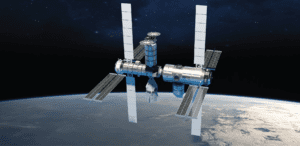
Image: Northrop Grumman
Edinburgh, 3 December 2021. – NASA announced having signed agreements with three U.S. companies to develop the designs of space stations and other destinations in space. The agreements are the first in a two-phase approach to a seamless transition of activity from the ISS to commercial destinations.
During this first phase, which is to continue through 2025, private industry will collaborate with NASA to formulate and design commercial LEO destination capabilities. In the second phase, the agency will certify these destinations for NASA crew member use. They will then purchase services for crew to use when available, thus saving money while enabling NASA to focus on its Moon and Mars missions.
The Space Act Agreements entail a total award amount of US $415.6M. The companies that received awards are Blue Origin (US $130M), Nanoracks (US $160M) and Northrop Grumman (US $125.6M). These awards will stimulate the development of commercial, independent space stations available to both government and private-sector customers.
NASA estimates that they will need continuous accommodations and training for at least two crew members in LEO. They will also require a national orbiting laboratory to perform approximately 200 investigations annually supporting human research and technology demonstrations.
 SpaceWatch.Global An independent perspective on space
SpaceWatch.Global An independent perspective on space




